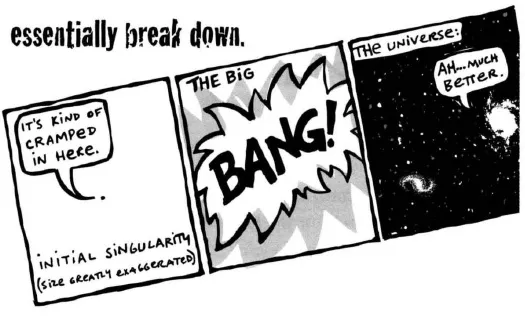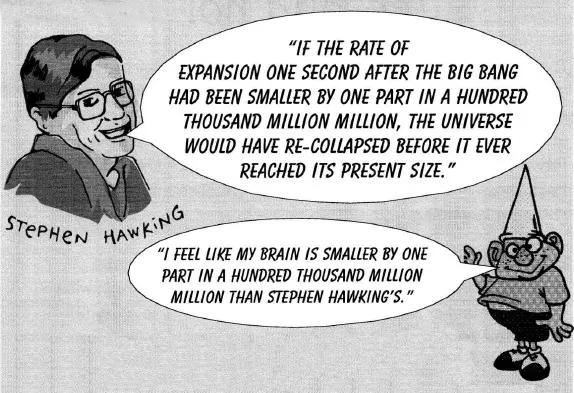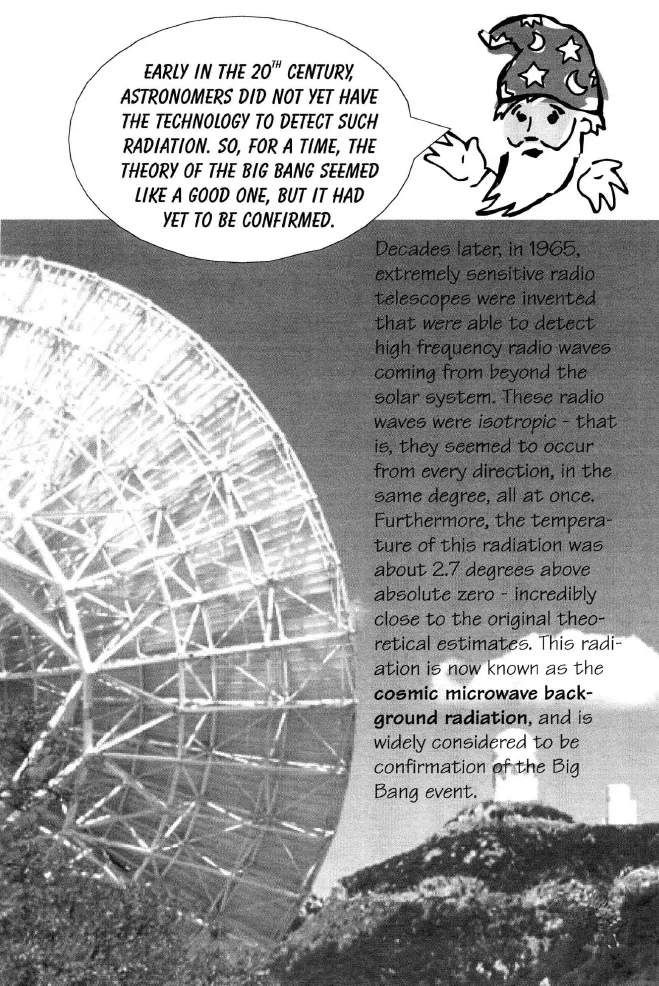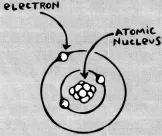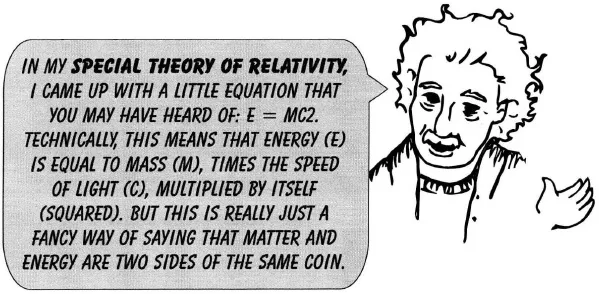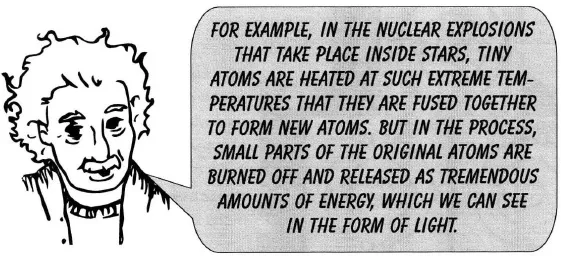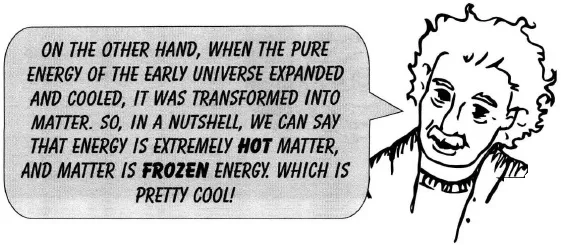![]()
And that which sings and contemplates in you is still dwelling within the bounds of that first moment which scattered the stars into space.
- Kahlil Gibran, The Prophet
[Alfred A Knopf, Random House, Inc. New York, 1951.]
In the beginning ... all things were one
We refer to the original state of our universe as the initial singularity, wherein everything we know to exist - matter, energy, time, and space - existed as one single reality, unimaginably small and infinitely dense. This all-encompassing reality was smaller than an atom, and nothing else existed outside of it.
If this notion seems impossible to comprehend - that’s because it is! No one really understands and, in fact, when we trace the history of the universe back to this original state of affairs, the laws of science, as we know them
But somehow - roughly 12 to 15 billion years ago - this initial singularity burst forth in what we call the Big Bang, giving birth to a creative, expanding, and dynamic universe!
Gravity is one of the fundamental forces by which matter is attracted to matter. On one hand, if the rate of expansion of the early universe had been much faster than it was, it would have been too fast for gravity to have been able to draw matter together. Neither galaxies, nor stars, nor planets, nor people could have ever existed, as all of the material unleashed by the Big Bang would have just scattered apart endlessly into infinity.
On the other hand, as Stephen Hawking states in A Brief History of Time ...
Fortunately for us, the rate of expansion after the Big Bang was apparently perfectly balanced with the amount of matter in the universe. If it hadn’t been perfectly balanced, we wouldn’t have the enormous and beautiful complexity that we see when we look up into the night sky - or, for that matter, when we look all around our world.
We still don’t know for certain whether this is an ...
open universe that will continue to expand forever into infinity, or if it is a ...
closed universe that will one day re-collapse upon itself in a big crunch, to return to a state of singularity. But by most indications, we have several billion years before we even have to begin to worry about that.
The Big Bang is a theory - but it’s a theory supported by overwhelming evidence. The expansion of the universe, however, is not a theory, but something that can be observed. First and foremost, if the universe is expanding as we go forward in time then, if we trace the history of the universe backwards in time, we can visualize it all stemming from a common beginning.
Early in the 20th century, astronomers and physicists first exploring the idea of the Big Bang reasoned that, with so much matter and energy packed together, the early universe had to have been so hot, and so dense, that nuclear reactions would have occurred everywhere at once. Nuclear reactions release radiation in the form of radioactive particles so, if all of this is true, then we should still be able to detect the residual heat radiation of the Big Bang throughout the universe. By now, billions of years later, they estimated this radiation should have cooled immensely, to be just a few degrees above absolute zero.
In the moments immediately after the Big Bang, the universe would have still been so tightly packed together that everything would have essentially existed as a single fireball of energy. But as the universe rapidly expanded, it would also cool, which would allow for different physical processes to emerge.
The first forms to emerge within the first second after the Big Bang were
quarks - the basic building blocks of elementary particles. Different combinations of these variously charged entities soon combined to form the subatomic particles of
protons and
neutrons. During the next three minutes, as the early universe continued to cool, these protons and neutrons then bonded together to form
atomic nuclei.Although this occurred within just the first three minutes of time, it took hundreds of thousands of years before the universe had expanded and cooled enough for the subatomic particles of electrons to surround these atomic nuclei. And when the first electrons bound themselves into orbit around the first atomic nuclei, they were finally able to form the first atoms - the fundamental particles of matter.
Different combinations of protons, neutrons and electrons form different kinds of atoms, or elements. Roughly one billion years after the Big Bang, the simplest and most abundant elements - hydrogen and helium - began to condense, forming gaseous molecular clouds, or nebulae (Latin for ‘clouds’). Eventually, through the force of gravity, the hydrogen and helium atoms within these molecular clouds collapsed upon themselves, forming the first st...



